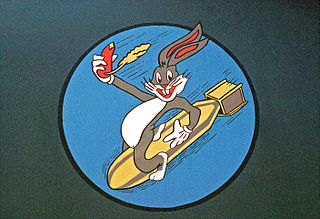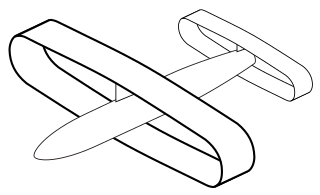
Surfing is a surface water sport in which an individual, a surfer, uses a board to ride on the forward section, or face, of a moving wave of water, which usually carries the surfer towards the shore. Waves suitable for surfing are primarily found on ocean shores, but can also be found in standing waves in the open ocean, in lakes, in rivers in the form of a tidal bore, or in wave pools.

Bodyboarding is a water sport in which the surfer rides a bodyboard on the crest, face, and curl of a wave which is carrying the surfer towards the shore. Bodyboarding is also referred to as Boogieboarding due to the invention of the "Boogie Board" by Tom Morey in 1971. The average bodyboard consists of a short, rectangular piece of hydrodynamic foam. Bodyboarders typically use swim fins for additional propulsion and control while riding a breaking wave.

A surfboard is a narrow plank used in surfing. Surfboards are relatively light, but are strong enough to support an individual standing on them while riding an ocean wave. They were invented in ancient Hawaii, where they were known as papa he'e nalu in the Hawaiian language, and were usually made of wood from local trees, such as koa. They were often over 460 cm (15 ft) in length and extremely heavy. Major advances over the years include the addition of one or more fins (skegs) on the bottom rear of the board to improve directional stability, and numerous improvements in materials and shape.
Automotive aerodynamics is the study of the aerodynamics of road vehicles. Its main goals are reducing drag and wind noise, minimizing noise emission, and preventing undesired lift forces and other causes of aerodynamic instability at high speeds. Air is also considered a fluid in this case. For some classes of racing vehicles, it may also be important to produce downforce to improve traction and thus cornering abilities.

A slipstream is a region behind a moving object in which a wake of fluid is moving at velocities comparable to that of the moving object, relative to the ambient fluid through which the object is moving. The term slipstream also applies to the similar region adjacent to an object with a fluid moving around it. "Slipstreaming" or "drafting" works because of the relative motion of the fluid in the slipstream.

A longboard is a type of skateboard typified by longer decks and wheelbases, larger-diameter and softer (lower-durometer) wheels, and often lower riding height compared to street skateboards, though there is wide variation in the geometry and construction of longboards. Among the earliest types of skateboards, longboards were inspired by surfing, with early longboards drawing from the design of surfboards, resembling and mimicking the motion of riding a surfboard, but adapted to riding on streets in a practice known as sidewalk surfing.

Longboarding is a variation of skateboarding typified by the use of longer boards ("decks") with longer wheelbases and softer wheels. While longboards vary widely in shape and size, compared to street skateboards longboards are designed to be more stable at speed and to have more traction due to larger wheel sizes and softer wheel durometers. While standard street skateboards may typically be between 28 to 34 inches long, longboards can range anywhere from 32 to 50 inches in length. Ride characteristics of longboards generally differ from that of street skateboards due to the use of specialized longboard trucks that have different properties than those typically used with skateboards; while street skateboards use "traditional kingpin" (TKP) trucks that are optimized for tight turning radii, ollie and flip tricks, slides, grinds, and transition skating, longboards are typically paired with "reverse kingpin" (RKP) trucks that are designed for increased stability at higher speeds, more "surfy" carving characteristics, and/or greater ride comfort for commuting over longer distances.

Planing is the mode of operation for a waterborne craft in which its weight is predominantly supported by hydrodynamic lift, rather than hydrostatic lift (buoyancy).
A foilboard, also known as a hydrofoil board or foil surfboard, is a type of board used in water sports; it is distinct from surfboards in that it has a hydrofoil rather than fins mounted underneath. This hydrofoil design allows the surfboard and its rider to rise above the water’s surface, allowing for fast speeds and increased maneuverability in a wide range of surf conditions. Foilboards are becoming increasingly popular across many water sports, including surfing, kiteboarding, and wakeboarding. Foilboards have also been used in competitions, with riders reaching speeds of up to 30 km/h while performing acrobatic maneuvers such as flips, twists, and more.

A spoiler is an automotive aerodynamic device whose intended design function is to 'spoil' unfavorable air movement across the body of a vehicle in motion, usually described as turbulence or drag. Spoilers on the front of a vehicle are often called air dams. Spoilers are often fitted to race and high-performance sports cars, although they have become common on passenger vehicles as well. Spoilers are added to cars primarily for styling purposes and either have little aerodynamic benefit or even worsen the aerodynamics.

A vertical stabilizer or tail fin is the static part of the vertical tail of an aircraft. The term is commonly applied to the assembly of both this fixed surface and one or more movable rudders hinged to it. Their role is to provide control, stability and trim in yaw. It is part of the aircraft empennage, specifically of its stabilizers.

Noseriding is the art of maneuvering a surfboard from the front end.

An aircraft stabilizer is an aerodynamic surface, typically including one or more movable control surfaces, that provides longitudinal (pitch) and/or directional (yaw) stability and control. A stabilizer can feature a fixed or adjustable structure on which any movable control surfaces are hinged, or it can itself be a fully movable surface such as a stabilator. Depending on the context, "stabilizer" may sometimes describe only the front part of the overall surface.
Skurfing is a towed water sport in which an individual is pulled behind a boat on a tow rope. The sport uses a skurfboard, which is a floating platform the user balances on, similar to a surfboard but typically much shorter, with two foot-straps that prevent falling off the board and three fins positioned on the bottom that make it easier to maneuver when the board is being towed. The word itself is a portmanteau of skiing and surfing. Skurfing is often considered the precursor to wakeboarding.

A surfboard shaper is someone who designs and builds surfboards. The process of surfboard shaping has evolved over the years, and the shaper often tailors his or her work to meet the requirements of a client or a certain wave. Surfboard shapers can be independent or work in collaboration with mass-production companies.

A closed wing is a wing that effectively has two main planes which merge at their ends so that there are no conventional wing tips. Closed wing designs include the annular wing, the joined wing, the box wing, and spiroid tip devices.

A surfboard fin or skeg is a hydrofoil mounted at the tail of a surfboard or similar board to improve directional stability and control through foot-steering. Fins can provide lateral lift opposed to the water and stabilize the board's trajectory, allowing the surfer to control direction by varying their side-to-side weight distribution. The introduction of fins in the 1930s revolutionized surfing and board design. Surfboard fins may be arrayed in different numbers and configurations, and many different shapes, sizes, and materials are and have been made and used.

This glossary of surfing includes some of the extensive vocabulary used to describe various aspects of the sport of surfing as described in literature on the subject.[a][b] In some cases terms have spread to a wider cultural use. These terms were originally coined by people who were directly involved in the sport of surfing.
Windfoiling is a surface water sport that is the hydrofoiling evolution of windsurfing, as well as typical sailing boats and sailing hydrofoils. It uses similar equipment to windsurfing with a normal or slightly evolved rig on a normal or specialist foil board.















